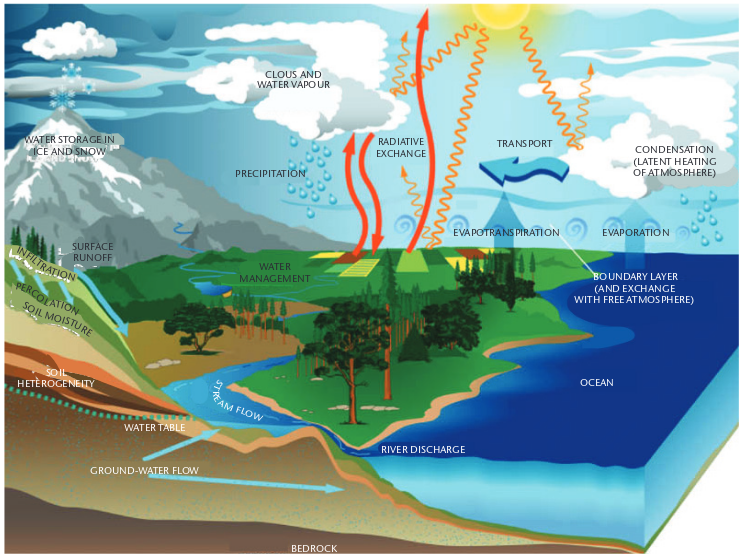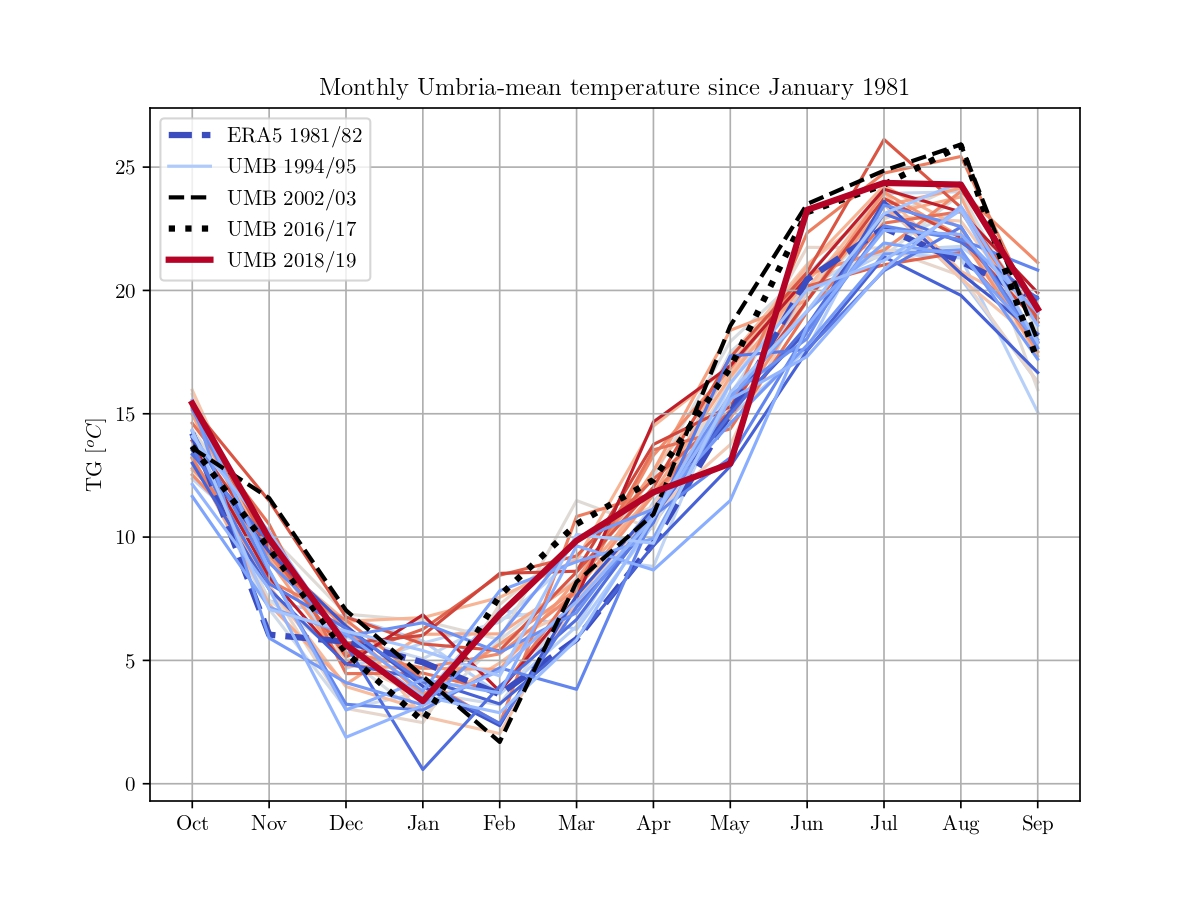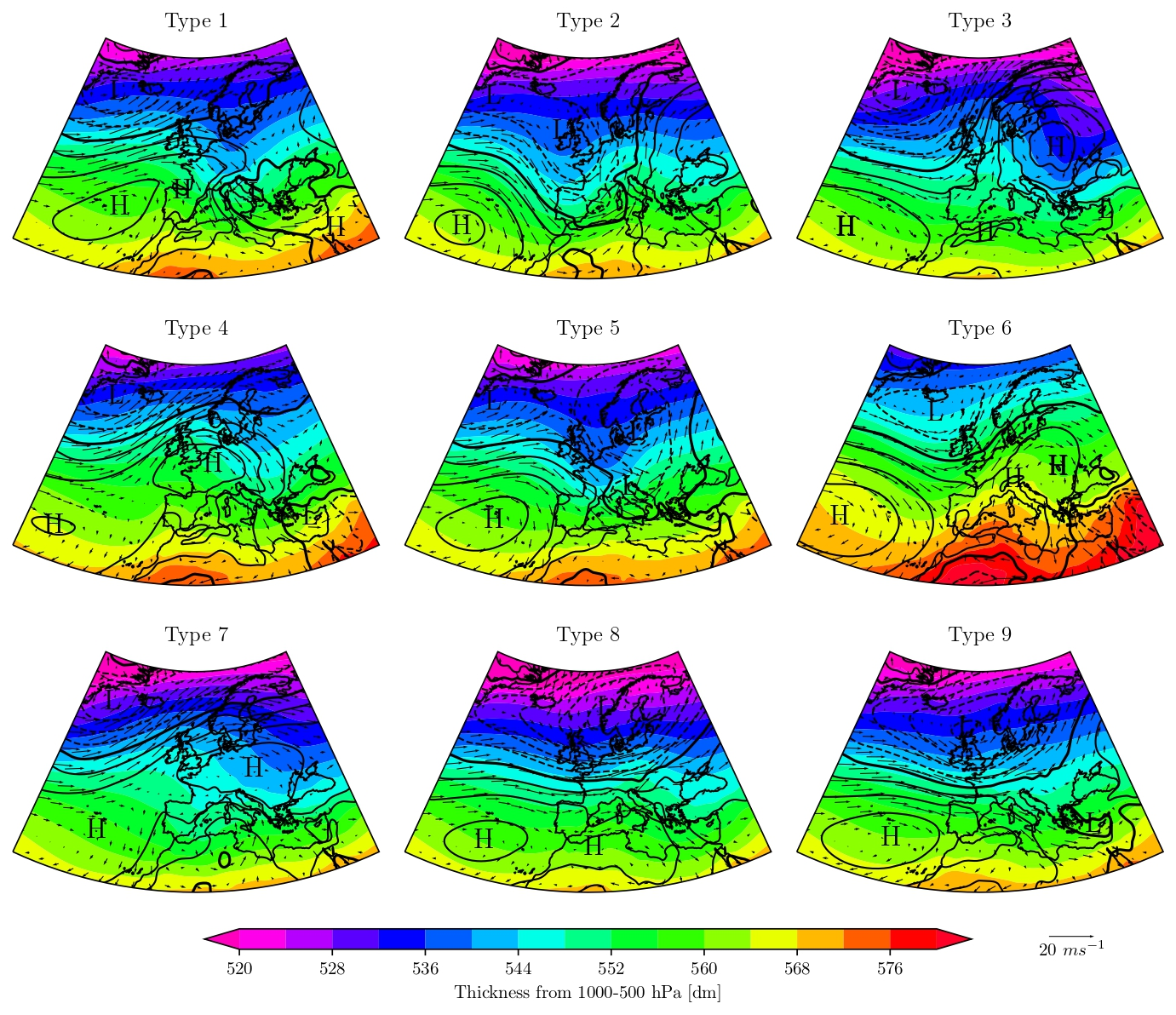
The Climate System (World Meteorological Organization (WMO). "Guide to Climatological Practices, WMO-No. 100", 2018.)
“Climatology is the study of climate, the workings of the climate system, its variations and extremes and its influences on a variety of activities including, but far from limited to, water resources, human health, safety and welfare. Climate, in a narrow sense, can be defined as the average weather conditions for a particular location and period of time. Climate can be described in terms of statistical descriptions of the central tendencies and variability of relevant elements such as temperature, precipitation, atmospheric pressure, humidity and winds, or through combinations of elements, such as weather types and phenomena, that are typical of a location or region, or of the earth as a whole, for any time period. Beyond being treated as a statistical entity, climate can also be studied as a determinant of, a resource for and a hazard to human activities.” (World Meteorological Organization (WMO). "Guide to Climatological Practices, WMO-No. 100", 2018.)
The climatology section of CRC constantly works to study both climatic variability and climate change, especially in Central Italy. In general, climatic variability refers to intra-seasonal, inter-annual and inter-decadal variations in climate conditions that are connected to periodic variations of atmospheric circulation, oceanic circulation and land surface properties. On the other hand, climate change refers to a systematic change in the statistical properties of climate over a long period (from decades to centuries). Such systematic changes have already occurred in the Earth’s climate history because of changes in the “natural” components regulating the climate system. However, nowadays “it is unequivocal that human influence has warmed the atmosphere, ocean and land. Widespread and rapid changes in the atmosphere, ocean, cryosphere and biosphere have occurred.”(Intergovernamental Panel on Climate Change, IPCC, Sixth Assessment Report, 2021).
Our mission is to study climate change in Central Italy and its impact on agriculture, ecosystems, and water resources.
- Climate data and Climate indices for central Italy
We collect, validate and analyze climate data of central Italy coming both from local authorities and global dataset, as provided by the Copernicus Climate Data Store. We use such data to study the climatology of our region and to monitor the evolution of climate indices which are fundamental especially for agriculture decision support systems. - Circulation weather types in central Italy
The climate variability is directly linked to the variability of atmospheric circulation. We study the frequency and the internal properties of different circulation weather types which are responsible for the observed climate in central Italy and in particular for the observed precipitation regimes. This research activity is conducted through the joint use of ERA5 reanalysis data and high resolution atmospheric models, in order to reproduce atmospheric circulations and understand the main physical mechanisms bringing rainfall in central Italy. This activity is performed over a long time period (more than 30 years), in order to study the climate change effect on the frequency and the internal properties of circulation weather types. - Vegetation phenology and climate change
We study the correlation between the plant phenology (the timing of periodic events in the plant life such as budburst, flowering, dormancy, migration and hibernation) and climate change. This research activity has lead to the creation and management of several Phenological Gardens (included in the International Phenological Gardens of Europe) where the life cycle of specific clones of various plant species is observed without being influenced by the genetic effects. Such gardens are effective plant-based climate-change monitoring systems and phenological observations are of strategic importance because of their considerable implications in the agriculture field (e.g. fruit production).

- 2021 – Programma d’intervento per l’analisi della rete meteorologica umbra e suo adeguamento agli standard internazionali. This project has been founded by Umbria regional authorities. In particular, the climatology section of CRC has outlined a regional strategy in order to develop an integrated database to provide reliable climate information in central Italy.
- 2018 – 2020 – Spatialmeteo DSS. This project has been founded by the European Agricultural Fund for Rural Development (2014-2020). UNIPG was in charge of developing automatic procedures for the spatial interpolation of agro-meteorological data. (https://www.lungarotti.it/files/spatialmeteo.pdf)
- 2018 – 2020 – SMARTMETEO: Network for the development of an innovative agro-meteorological and phytopatological monitoring system. This project has been founded by the European Agricultural Fund for Rural Development (2014-2020). The goal was to implement a regional network aimed to support phytopathological modeling and smart alert systems in order to: increase farm resilience to adverse meteorological phenomena; increase resilience by means of intelligent identification and early treatment of plant-pathology technologies; reduction in the use of pesticides. UNIPG was in charge of developing automatic procedure for meteorological data quality control. (https://www.smartmeteo.it/)
- 2014 – 2015 – MeteoWine. Monitoring of climatic and environmental conditions for the development of meteorological models and plant protection models for the production of high quality grapes in Umbria. UNIPG was in charge of introducing and developing innovative methods and technologies for the monitoring of meteorological conditions in Umbria. (https://www.parco3a.org/progetti/il-monitoraggio-delle-condizioni-climatico-ambient)
- 2010 – African Monsoon Multidisciplinary Analysis (AMMA)
The University of Perugia took part as partner in the AMMA project to investigate the role of the African monsoon in determining the global climate and the future of West Africa. The project produced important results on the influence of the monsoon on the formation of Atlantic hurricanes and on local impacts on disease and food crises in Sahelian Africa.

Silvestri, L., Saraceni, M., & Bongioannini Cerlini, P., Links between precipitation, circulation weather types and orography in central Italy. International Journal of Climatology, 1– 19. https://doi.org/10.1002/joc.7563, (2022).
Bongioannini Cerlini, P. B., Saraceni, M., Orlandi, F., Silvestri, L., & Fornaciari, M., Phenological response to temperature variability and orography in Central Italy. International journal of biometeorology, 66(1), 71-86. https://doi.org/10.1007/s00484-021-02190-1, (2022).
Bongioannini Cerlini, P. & Silvestri, L., Validation of a regional agro-meteorological network in Central Italy using ECMWF ERA5 reanalysis. Earth and Space Science Open Archive ESSOAr, https://www.essoar.org/doi/abs/10.1002/essoar.10500963.1, (2019).
Taylor, C.M., Parker, D.J., Kalthoff, N., Gaertner, M.A., Philippon, N., Bastin, S., Harris, P.P., Boone, A., Guichard, F., Agusti-Panareda, A., Baldi, M., Cerlini, P., Descroix, L., Douville, H., Flamant, C., Grandpeix, J.-Y. and Polcher, J., New perspectives on land–atmosphere feedbacks from the African Monsoon Multidisciplinary Analysis. Atmosph. Sci. Lett., 12: 38-44. https://doi.org/10.1002/asl.336, (2011).
Paolina Bongioannini Cerlini, This email address is being protected from spambots. You need JavaScript enabled to view it.
Lorenzo Silvestri, This email address is being protected from spambots. You need JavaScript enabled to view it.
Miriam Saraceni, This email address is being protected from spambots. You need JavaScript enabled to view it.
Silvia Meniconi, This email address is being protected from spambots. You need JavaScript enabled to view it.
Bruno Brunone, This email address is being protected from spambots. You need JavaScript enabled to view it.


